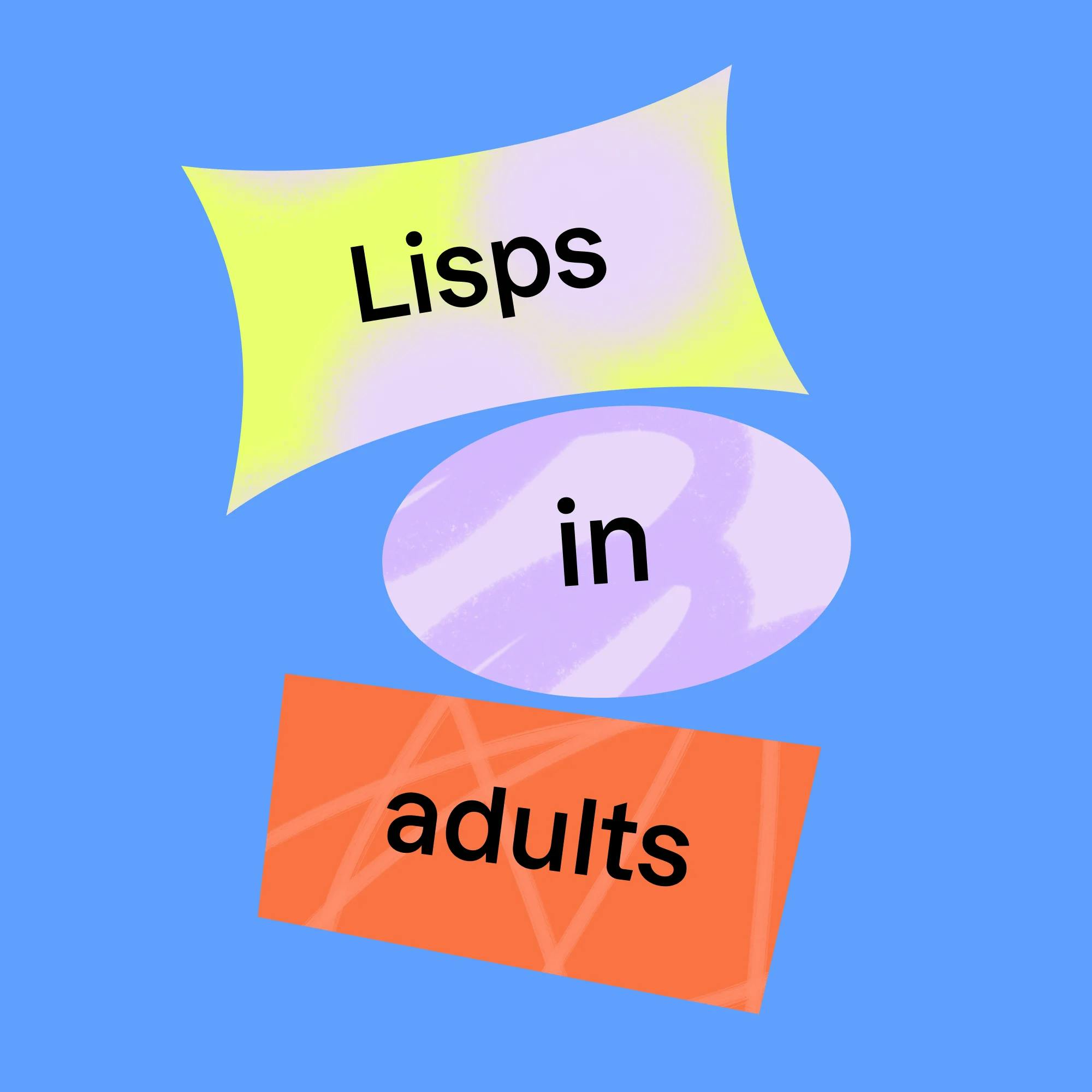How Are Lisps Diagnosed and Treated?
In this lesson, we'll discuss how to recognize a lisp, how lisps are diagnosed, and what treatment looks like.
A lisp is an incorrect production of the /s/ and /z/ sounds. These two sounds are produced in a similar way. The tongue is positioned behind the top front teeth, with the sides of the tongue touching the inside of the top back molars. Air is directed over the tongue and out the front of the mouth.
The way these sounds differ is in the use of the vocal folds. For the /s/ sound, the vocal folds aren't used. For the /z/ sound, they are. You can test this out by placing your hand on your throat as you say the /s/ and /z/ sounds. Notice how for the /s/, you don't feel any vibration in your throat. That's because your vocal folds aren't being used. But now try the /z/ sound. Feel that buzzing? That's caused by the vibration of your vocal folds.
Both of these sounds require such a specific tongue position and airflow that any speech error is bound to be easily recognized. Not to mention, /s/ is one of the most common sounds in the English language. So if a person is having trouble pronouncing these sounds, you'll notice it simply by the frequency of the errors.
Children can typically pronounce /s/ and /z/ sounds correctly by the time they're 5 years old. If you suspect your child has a lisp, or you're dealing with one yourself, it's a good idea to be proactive and contact a speech-language pathologist.
In order to formally diagnose a lisp, the speech therapist will perform a speech assessment that may include examining the anatomy of the mouth and tongue placement, as well as checking for issues like a tongue tie or tongue thrust. A tongue tie could contribute to what is called a lateral lisp. Speech-language pathologists go through extensive training and schooling in order to evaluate speech production. The speech therapist will listen to the way the person says all of their speech sounds, including /s/ and /z/. They will also listen for the type of lisp present.
After the evaluation, the speech therapist will determine how many /s/ and /z/ errors occurred. They'll record whether these errors were observed at the word level, sentence level, or conversational level. Did they occur in the beginning, middle, or ends of words, or at all positions within words? All of this helps the speech-language pathologist determine the severity of the lisp.
If a lisp is diagnosed, the speech therapist will recommend the treatment needed to correct it. For most people, this means speech therapy sessions once or twice a week. The speech therapist will then write a personalized treatment plan including goals specific to the person's needs. These goals will allow the therapist to monitor progress as the person works to reach their next milestone.
Let's discuss how these goals are usually written. Say that you need to work on your /s/ sound. Your speech therapy goal will be specific to the type of /s/ production being targeted. The goal will also specify which complexity level you'll start working on in therapy, such as the syllable level or conversational level. And finally, your speech therapist will set an expected accuracy percentage that you should meet over the course of several sessions. Here's an example of a real speech therapy goal: "In the next two to three months, the client will demonstrate the ability to independently produce /s/ in the initial position of words with 90 percent accuracy, across three consecutive sessions, in order to communicate more clearly in daily situations."
As you can see, these goals are written to be specific and measurable. That way you and your speech therapist can track progress week to week.
During sessions with children, a speech therapist will likely use games, toys, and activities that are motivating for kiddos. The therapist wants speech therapy to be fun and encouraging! In speech therapy for adults, sessions are typically more practice driven. The therapist will provide several opportunities to practice target sounds as well as conversational breaks.
During sessions, the speech therapist will be listening closely to the client's speech production. All speech therapists have trained ears to catch sounds and words that aren't pronounced correctly. Throughout the session, your speech therapist will provide prompts and tips demonstrating the right tongue or mouth movement when needed.
Don't stress if it takes several sessions before you start to see improvement. It often takes a lot of time and repetition to reach certain goals. And on that note, one question I often hear is how long speech therapy typically lasts. There's no one simple answer here. All people are different, and a few key factors play a role.
For children, one factor is their age. If a child is too young, they may not be ready to work on certain sounds yet. Some kiddos simply need a little more time. But on the other hand, older kids have more years of pronouncing sounds or words incorrectly, and it can be harder for them to break habits.
Motivation is also a factor in how long therapy takes. When a person wants to improve their own speech, that can make a big difference. You and your speech therapist can talk about what would be motivating. Maybe it's being confident when meeting new people, feeling good about giving a presentation at work, or simply the desire to be understood more easily.
And finally, here's perhaps the biggest factor in the duration of therapy: how often you practice at home. I really can't stress this enough. Many people think that speech therapy alone is what helps someone improve their speech, and yes, therapy is a big part of it. But there has to be practice and carryover between sessions in order to make progress as quickly as possible.
Your speech therapist should provide regular home practice ideas, activities, and exercises. If you're helping your child, you'll learn ways to practice and reinforce what they're learning throughout the week. If you're an adult working to improve a lisp, try to find someone to practice with. Whether this is a spouse, family member, or friend, it's important to have someone you trust provide honest feedback and encouragement. This can make all the difference.
So to wrap up, let's take a minute to recap what we've covered here:
/s/ and /z/ errors are easily recognized due to the specific tongue position needed for these sounds, as well as how frequently they come up in the English language.
A speech therapist is needed to formally diagnose and categorize a lisp.
Treatment is tailored for the specific needs of each person.
Length of therapy can depend on a child's age, the person's motivation, and how often they practice at home.







